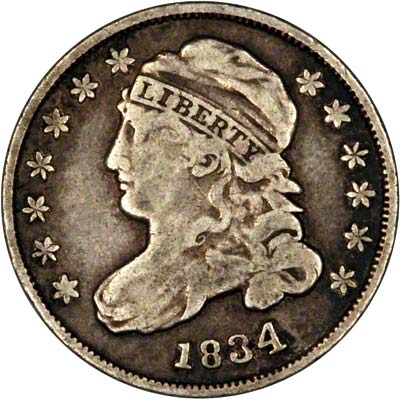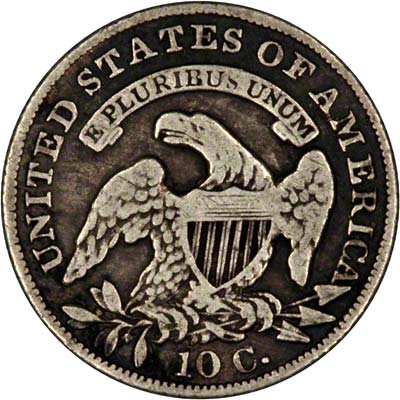| The Very Highest Quality Information... |
| America and American Coins |
|
| ||||||||||||||||||||||||||||||||||||

| ||||||||||||||||||||||||||||||||||||

| ||||||||||||||||||||||||||||||||||||
Colonial Years
As the European population in the Americas grew, several different colonies were formed, each with their own legislative bodies and governors. Each of these colonies were semi-autonomous and came to guard this autonomy with great jealousy, becoming very hostile and suspicious of any attempt by London to curb this autonomy.
Taking their cue from the principle cemented by the English Civil War, that the Executive had no right to raise taxes without the consent of the legislative body, and resented attempts by the British Government to impose taxes on the British colonists that had not been approved by the colonial legislatures.
War of Independence
The defeat of France and their Indian allies in the 7 Years War removed the main external threat to the British colonists safety, as well as plunging Britain into serious debt, wished to partially alleviate by imposing its own taxes on the colonists via the Stamp Act in 1765.
This proved to be extremely controversial, provoking riots and protests that forced the British Government to back down and repeal the Stamp Act the following year, although Westminster refused to renounce its right to impose taxes on the American Colonies if it so desired.
However, with the removal of the external threat to the colonies safety following the 7 Years War, many of the British-American colonists began to question the need to suffer the inconvenience and expense of having British Troops stationed in the colonies at all, and were suspicious of the real motives behind these garrisons, which many felt were there to enforce the British Government’s unpopular taxes. After years of mutual distrust, disorder and protests, fighting broke out in 1775, leading to the Declaration of Independence the following year. After initial setbacks, the newly American colonists, along with their French, Spanish and Dutch Allies, defeated the main British force at Yorktown in 1783, forcing Britain to recognise the Independence of 13 of her American Colonies.
Post-Independence
After the War of Independence, the newly independent country began to increase in size. Although thwarted in her ambition to take Canada from the British in the War of 1812, she began to expand westwards instead. After defeating the Mexicans in the 1846-48 Mexican American War, America gained vast swathes of territory, from Texas all the way to California and the West Coast. Throughout the 19th Century, these territories were occupied by settlers and the territories were divided into States that would eventually joined the Union.
A devastating Civil War was fought between 1861-65 over the issue of slavery (and the extent of the states’ rights to govern their own internal affairs). The separatist Confederacy was eventually defeated, and the secessionist states re-absorbed into the Union. Industrialisation and a rapid increase in population saw, by the end of the 19th Century, America become one of the world’s most powerful countries.
20th and 21st Centuries
The devastating effects of two World Wars on Europe (and the rapid expansion of America’s manufacturing base) saw America emerge as one of two Superpowers (along with the Soviet Union) that dwarfed other nations in terms of economic, political and military power. Following the collapse of the Soviet Union in 1991, America was left in the position of being unchallenged as the world’s sole remaining superpower. However, the current economic crisis currently affecting the West, and the rise of former economic backwaters in Asia and South America, do at the time of writing threaten to undermine America’s hegemonic position in the decades to come.
,
American Coins
The first coins used in the US where probably Spanish issues used in those parts of the US that once belonged to the Spanish Empire (such as Mexico and Florida). In the English and British colonies, English/British currency was often used. However, due in part to a chronic shortage of currency (another source of resentment by the colonists) these often circulated alongside Spanish and French coins.
In many parts of the US, Spanish currency was used more frequently than British or local British-based £sd currency, and partly for this reason the US adopted a decimal system of currency based around the Spanish Dollar in 1792. The US Dollar was divided into 100 Cents (each of which was colloquially refered to as a ‘penny’. The reason for this being that £1 in Sterling was worth approximately US$4.80* at the time the dollar was introduced, which with 240 pennies to the Pound made the US Cent the equivalent of 1d in Sterling. In fact, this general equivalence remained intact until Britain left the gold standard in 1931, causing the currencies to fluctuate against each other. However, the colloquialism stuck, and the term ‘penny’ remains in current use as a nickname for the US Cent.
Denominations struck for use as currency today are the 1c, 5c (Nickel) 10c (Dime) 25c (Quarter Dollar) 50c (Half Dollar, rarely seen in circulation) and $1 (although its paper equivalent is more popular). Until 1964, all denominations from the Dime to the Dollar were struck in 0.900 fine silver. These ‘pre-65’ legal-tender silver coins are a popular investment vehicle for silver in the US, much like British Sovereigns are for Gold in the UK.
Interestingly, the only really major change to the US coinage since the 19th century (apart from the pictorial designs) has been the metal content. The size and dimensions of all the commonly used denominations has remained the same for over a century. Most other countries have, thanks to inflation over the decades, been forced to reduce the size of its coins in order to reflect their reduced purchasing power. The 1c or ‘Penny’ today is copper-plated zinc, and costs more to produce than its face value. There is currently a debate about whether to discontinue the production of the cent. The inherent conservatism of the Americans when it comes to their use of money however, means that the cent could continue to be produced at a loss for some years yet.
*The US Dollar was based on the average weight of a worn Spanish Dollar of 371 grains, rather than a new one of 377 grains, thus in.
For Sale and Wanted
If you are interested in coins from America please see our product index:-
American Coins
Gold Coins
We also have gold coins from America on our taxfreegold website:-
American Gold Coins
| ...at the Lowest Possible Price |
|
32 - 36 Harrowside, Blackpool, Lancashire, FY4 1RJ, England.
Telephone (44) - (0) 1253 - 343081 ; Fax 408058; E-mail: info@chards.co.uk The URL for our main page is: https://24carat.co.uk |
Web Design by Snoop |